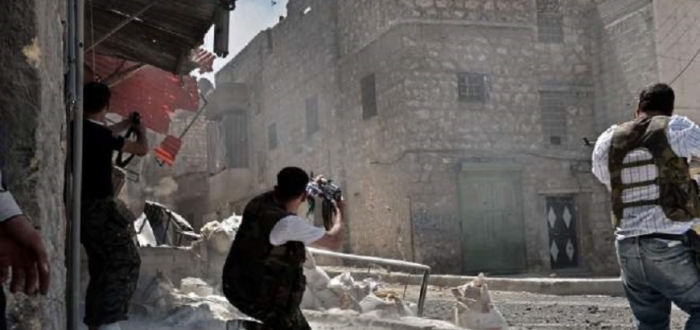Al-Souria Net’s correspondent in the Damascus countryside, Nebuchadnezzar, reported that opposition factions belonging to the “joint operations room” managed to kill dozens of Assad's forces, including two high-ranking officers on the “al-Fadaiyeh” front, after an attempt by regime forces to advance toward other areas in Eastern Ghouta and the Damascus countryside in violation of the UN truce agreement in Syria.
A 14.5-caliber heavy machine gun and two T-72 tanks were also reported to have been destroyed in the attack.
Our correspondent added that Assad’s forces’ current aim is to control the southwestern sector of Eastern Ghouta, where the towns of Deir al-Asafir, Zabdeen, Harasta al-Qanatra, Haroush, Noula and Bzeina are located.
This comes after regime forces and allied militias took control of the Agricultural Institute building in the al-Fadaiyeh area on the Marj front at the beginning of March, which had a major effect on the course of fighting in the towns of Nashabiyeh, Harasta al-Qanatra, and Beit Nayem, after the route was opened for Assad’s forces while the way between the city of Harasta and the town of Beit Nayem was cut.
In the same context, the media office of the Army of Islam said on its website that: “Heavy clashes continued on Thursday night in the Fadaiyeh axis, when Assad’s forces composed of four groups carried out an attack on the farms of Harasta al-Qanatra, beginning from the Fadaieyh area, accompanied by a number of heavy-armored vehicles.”
The media office said that opposition factions in the “joint operations room” relied on ambushes, considering the difficulty of directly confronting the attacking forces, thereby pushing Assad’s forces to advance into opposition areas, where they were surrounded and struck, adding more than 40 soldiers were killed. The regime has not yet been able to evacuate all the bodies, according to the statement.
The media activist Abu Hadi al-Doumani previously told Al-Souria Net: “Assad’s forces put all its capabilities and military weight into taking control, especially of the strategic Tel Farzat, which overlooks wide areas of Eastern Ghouta, which would give them an advantage in regaining the rest of the towns in the Marj area.”
Doumani noted that Assad’s forces were trying to “take control of a large area of farmland owned by residents and expel thousands of families, which is a large factor pressuring the mujahideen to comply with the regime’s conditions.”
This article was translated and edited by The Syrian Observer. Responsibility for the information and views set out in this article lies entirely with the author.


